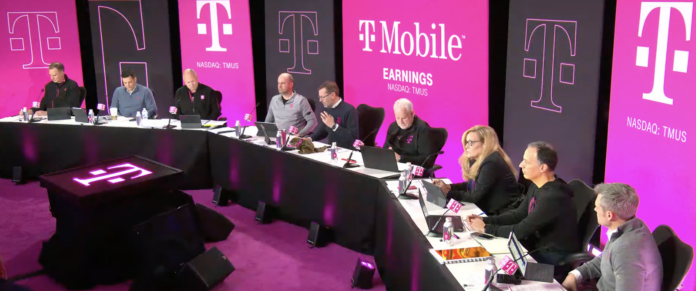‘We are experiencing the greatest growth momentum in our history,’ CEO Mike Sievert said on the company’s quarterly call
T-Mobile US beat its own expectations for 2021, and is starting off 2022 with big plans for its 5G network, expansion of its home internet service and pursuit of enterprise customers.
“We are experiencing the greatest growth momentum in our history, setting record customer growth and service revenue growth, all because of the important investments we’ve made and will continue to make in our network leadership and in under-penetrated markets,” said CEO Mike Sievert on the company’s call with investors. “This momentum sets us up for a very strong 2022. … We have big aspirations for this year.”
In the fourth quarter and full-year of 2021, T-Mobile US reported:
-$15 billion in service revenue in the fourth quarter and a record $58.4 billion for the full year.
-Profits of $422 million in Q4 2021 and $3.0 billion for the full-year 2021.
-Postpaid net account additions of 315,000 in the fourth quarter and 1.2 million for the full year.
-Net Postpaid phone customer additions of 844,000 in the most recent quarter, and 2.9 million for the year.
-High-speed Internet net customer additions of 224,000 in Q4 and 646,000 for the year, more than the 500,000 it had targeted. About 40% of home internet customers are new to the company, T-Mo reported.
Sievert said that for high-speed internet, T-Mo was the fastest-growing broadband provider in the industry, even when taking cable competitors into account. “T-Mobile 5G Home Internet is ready for its prime-time moment,” he said. Most of T-Mobile US’ home internet customers are coming from suburban and urban markets, according to executive remarks on the call.
T-Mobile US reached 210 million potential customers with its midband 5G deployment this year — more than the 200 million it had targeted — and plans to cover 300 million by the end of this year. The carrier’s competitors, Sievert insisted, simply won’t match T-Mobile US’ 5G build any time soon.
“According to their own build plan[s], it will take [AT&T and Verizon] multiple years to reach 200 million people, and they still won’t be anywhere near the depth of mid-band spectrum that we’re putting to work across our larger footprint,” Sievert said. “This demonstrates the remarkable deployment machine that we have spent years building and how hard it is to replicate.”
President of Technology Neville Ray echoed that sentiment, saying that 2021 was a year with a “powerful lead” for T-Mo and “we really want to press that home in 2022.
“We’ve built a very, very high-performing deployment machine. It’s not just deployment, its supply chain logistics, radio features, there’s so much to pulling together this type of deployment at this pace, which is record breaking. So, while we have that wind in our sales, it’s a great opportunity for us to really push the envelope,” Ray said.
T-Mobile US’ rural market share of mobile customers has bumped up from 13% to 15% this year, its executives said, and small-and-rural markets accounted for more than a third of new accounts.
As it continues to integrate the former Sprint network and Sprint customers, T-Mo expects to have hit its high point of churn during the fourth quarter of 2021, when postpaid phone churn rose to 1.10%. According to the company, 64% of Sprint customers have been migrated onto the T-Mobile US network and the final billing migration will ramp up over the course of 2022 and into 2023.
“So let me sum it up: 2021 was our best year ever, and that’s just because 2022 hasn’t happened yet,” Sievert said.

